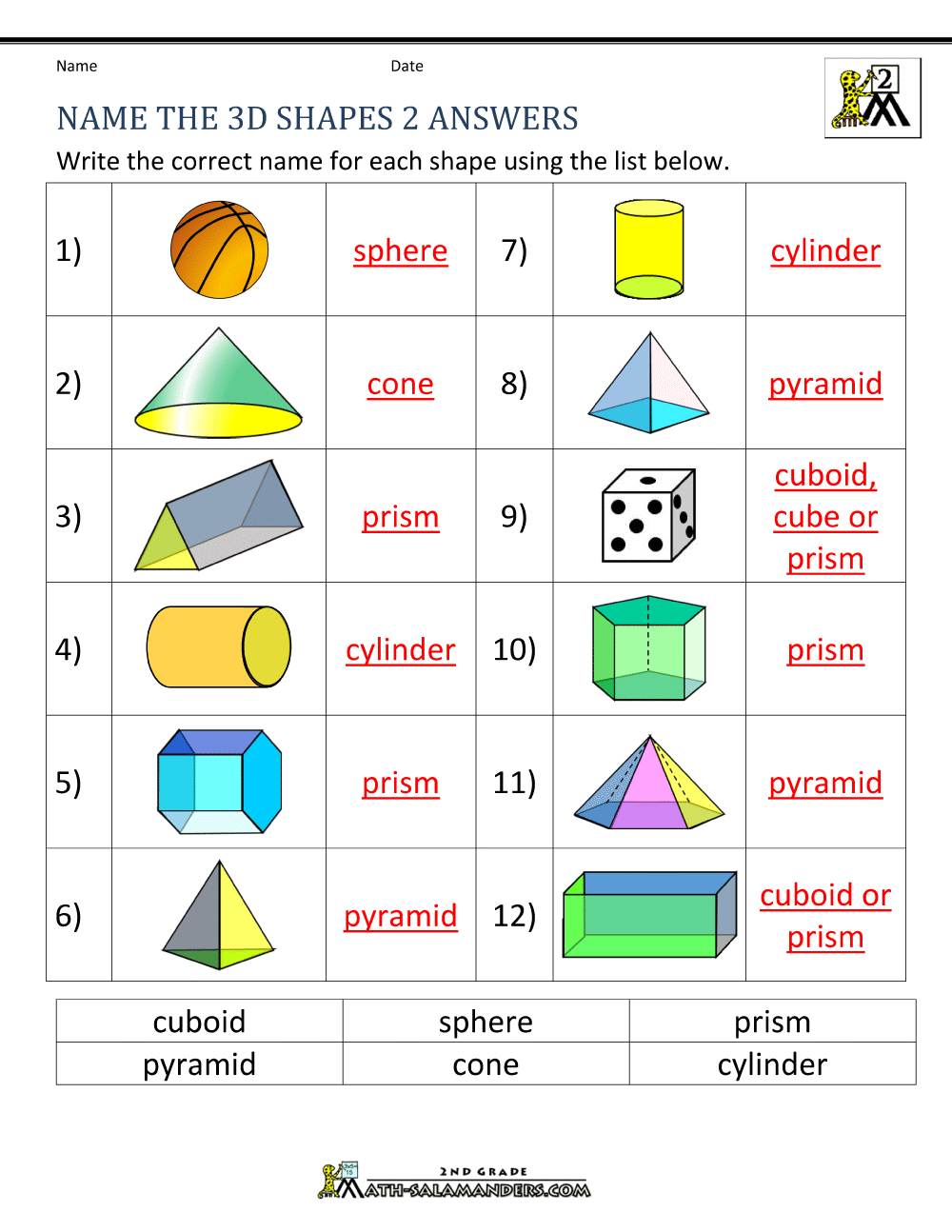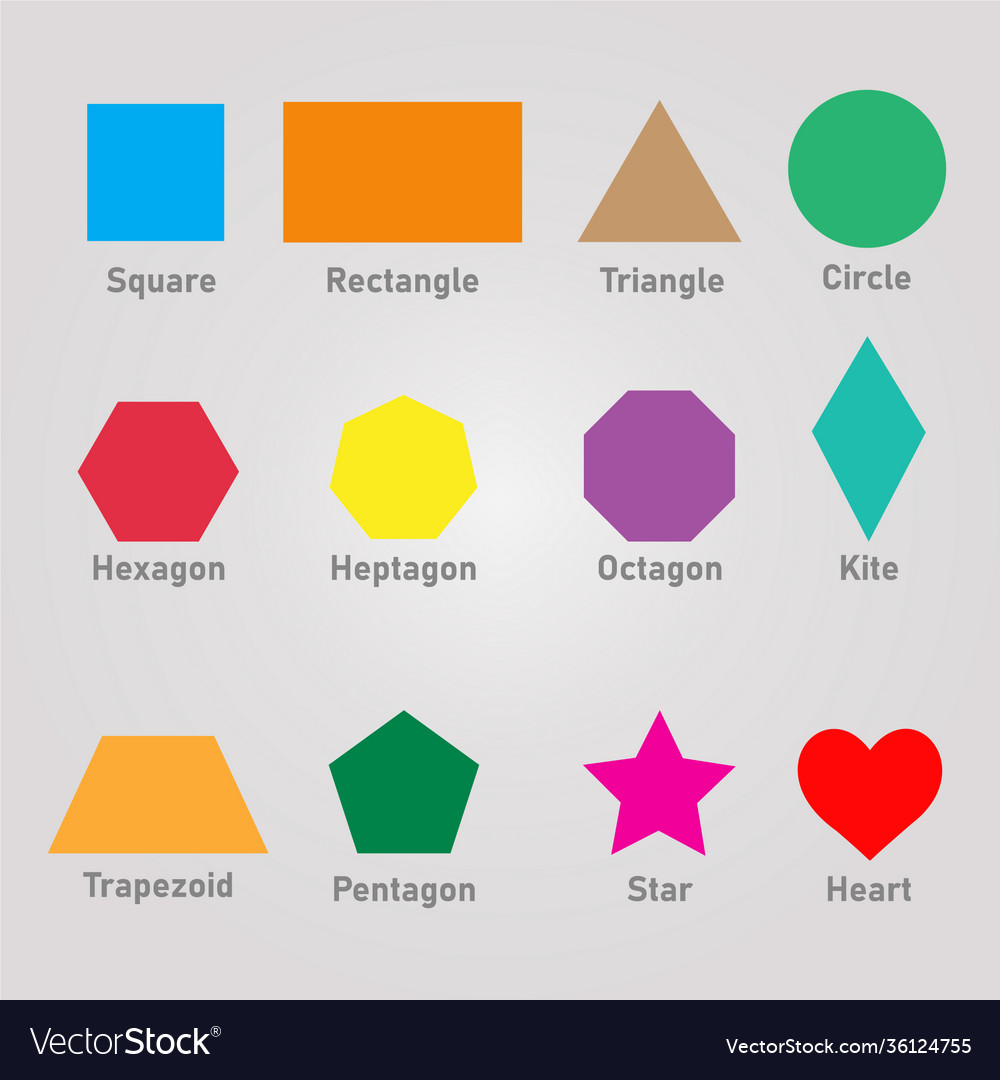

This part of the list covers the more common everyday shape words you might encounter.Ĭone – 3D shape from a flat base to a single high point (tapers)Ĭube – 3D shape made of 6 equal sized squaresĬylinder – 3D shape joining two circular basesĮllipse – an irregular (not symmetrical) circle Words that may be also be useful when discussing different shapes are side (the edge of the shape), face (the surface of a shape), regular (all sides the same length) and irregular (sides with different lengths), and 3D (when shapes have a third-dimension (3D), or depth – 2D shapes are flat).

Shapes names download#
So, we hope you now know more about the common 3D shape names and properties, such as faces, edges, and vertices.įor even more ways to explore 3D shapes, download the DoodleMaths app! It’s filled with fun interactive exercises and educational games specifically exploring shape and volume, making it the perfect way to bring your child’s learning to life.The following list covers the most common words for shapes in the English language, with explanations (sorry, no pictures!). However, you probably won’t need this until you begin doing high-level maths calculations.ģD shapes don’t have to be scary! They’re actually quite simple to understand.

The calculation for spherical volume is (4/3) πr 3 or 4/3 times π times the radius cubed.įor a hemisphere, the calculation is the same but halved. Triangular pyramid: 1/3 X Base Area X HeightĬalculating the volume of a sphere is a little more tricky and involves a figure called π (3.1415926…). Some of the most common volume calculations include: However, you’ll need to remember the right formula for the shape (like with calculating areas of 2D shapes). This will help you to be sure you’re set for anything your maths teacher might throw at you!Ĭalculating the volume of a 3D shape is easy. As such, you should always try to understand it carefully. Volume is one of the most important 3D shape properties you’ll need to know. It’s also helpful to look at their 2D equivalents. For example, compare a sheet of paper (2D) to a cardboard box (3D).īefore we go further, we should look at some of the most common 3D shape names. By contrast, 3D shapes have a real-life shape with depth and fill. The main thing to remember here is that 2D shapes are flat. However, tennis balls don’t really look like circles in real life because they aren’t flat! Instead, real-life tennis balls are called spheres – the 3D version of a circle.ĭon’t worry – we’ll look at some of the common 3D shape names in the next section. If you drew this on a piece of paper, you’d probably draw a circle. It means that the shape has multiple sides and can be filled, like your favourite cereal box.ģD shapes are based on a similar 2D shape. However, 3D is a little different and is something you’ll see more often in real life. The easiest way to describe this is as a flat surface, such as a rectangular piece of paper. Once you’ve checked this, you can look at 3D shapes. If not, no worries! Take a step back and make sure you know some of the most common 2D shape names and properties. Chances are, if you’re learning about 3D shapes, you’ve already got to grips with 2D shapes.
Shapes names how to#
How to work out the volume of a 3D shapeįirst of all, we need to look at the basics of 3D shapes and what they actually are.Luckily, we’ve compiled everything you need to know to master the basics of 3D shapes in today’s guide! You can learn all about the most common 3D shapes, including their names, properties, and features, with a little time. Now it’s time to begin taking things to the next level with 3D shapes!ģD shapes are a little more complex than 2D shapes, but they really don’t have to be a big issue. So, you’ve got the hang of 2D shapes and their properties.


 0 kommentar(er)
0 kommentar(er)
